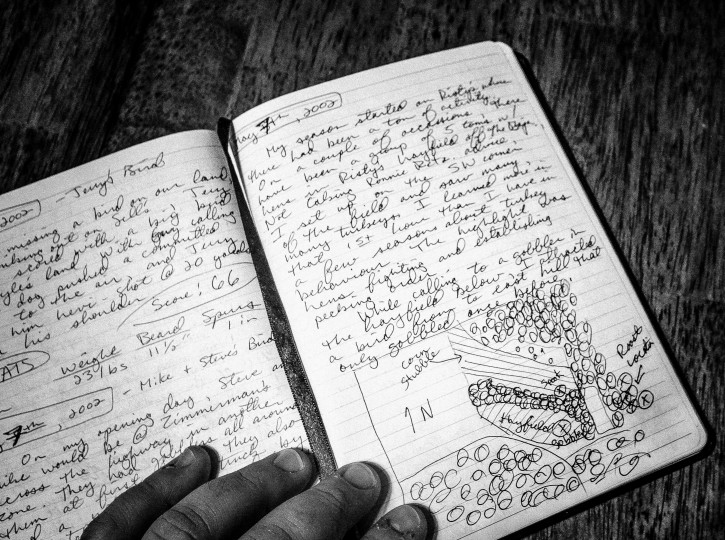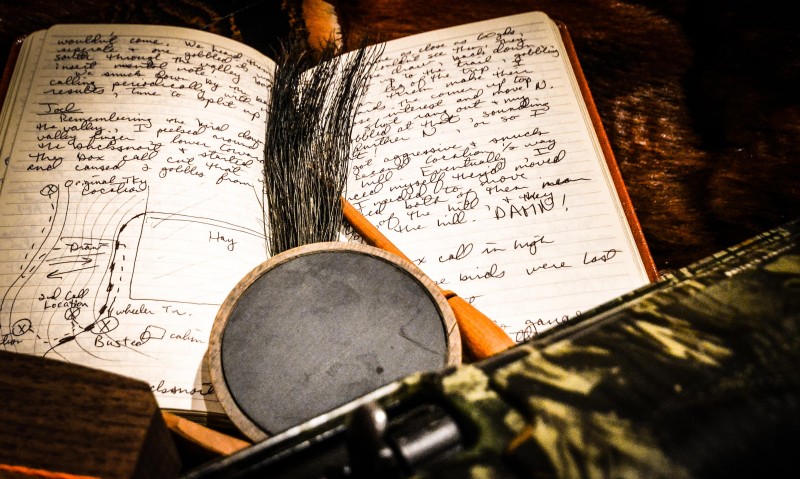What if I told you that the number-one thing you could do to kill a spring turkey this year was something you did last year? Confused? Let me try again. Do you tend to make the same mistakes in the turkey woods year after year? Well don’t feel bad, even the most talented turkey hunters have to live down some errors in judgment from time to time. That said, “Those who cannot remember the past, are condemned to repeat it,” and if you don’t write down your findings you’ll never be able to recall them.
Experience is the best reminder, but you’ll shorten the great turkey learning curve dramatically by simply writing down your hunting adventures on a daily basis. Ever hear of the student who cheated on a test by writing the answers on his hand, only to find out that jotting them in ink on his palm made him ready for the test? Journaling is much the same. Learn it once, write it down, then study your “notes” prior to opening day and you’ll be ready for the tom that comes in silent after you impatiently only gave him a few minutes to respond.
Turkey hunting, especially in Minnesota, is an outdoors pursuit whose teachings are fierce yet succinct. Our five-day seasons with a one-bird limit force us to hunt hard, hunt quickly, and forget our lessons just as fast as you can say “plucked!” That doesn’t mean they’re not impactful or even painful, it just means that you’ve got another 364 days to forget the crucial details that surround said notorious events. I know I can forget something a few seconds after I’ve heard it, so how would I be expected to remember it a year later?
Oh I can hear you grumble now. “This is work.” “I don’t want to read and write, I want to hunt.” Well let me be the first to tell you that after 15+ years of turkey journaling, the hardest part is getting started. I’m the greenest greenhorn in the woods without looking at my journal each pre-season. Not only do I study my notes to figure out what not to do, I use it as a benchmark for how to hunt similar roosts or specific gobblers that have long since kicked the bucket. The journal also exists as a self-produced pep-fest for all things gobbler. You think you’re excited to hunt now, just wait till you’ve got pages of intel, and hundreds of plays to call come game-time. Journaling is also a great way to reminisce and re-live the hunt, and it’s also not a bad way to keep your hunting buddies honest. The journal doesn’t lie, your buddies, well that’s a different subject.
So how do you get going? Simple. Start with the vitals. Date, season, hunting partners, location, weather, and wind are all great places to build from. I include a bit of background, including what my scouting has shown, general bird numbers, winter severity, and just my frame of mind going into each season. From there, I enter a few details, funny or otherwise memorable, then delve into the guts of the hunt. All successful hunts are logged, including some that are not, but no matter what, whenever a gobbler pulls a fast-one or dies trying, I quick sketch a detailed map of what happened for frame of reference, along with a few lessons that particular bird taught me. I also include his stats in the form of beard and spur lengths, along with weight and score should I be lucky enough to wrap a tag around his leg.
I’ve made what I feel to be every mistake in the book, but I literally keep adding a new one or two to “the book” each season. Consistent mistakes turn into constant mental reminders each time you enter the woods, and the oddballs you write up along the way laser into your brain yet a few more tricks to pull out of your sleeve when the going gets tough. Every bird is an individual, but turkey hunters, like poker players, do our best to play the odds with the cards we’re dealt. Your journal is literally your cheat-sheet, giving you the depth of understanding needed to know a wild bird’s habits, along with the clarity to execute the right plan of action, at the right moment, for the bird you’re after. Wild turkeys in their natural environment are the ultimate instructor, you just have to do your part to pay attention and study up for the next test.

